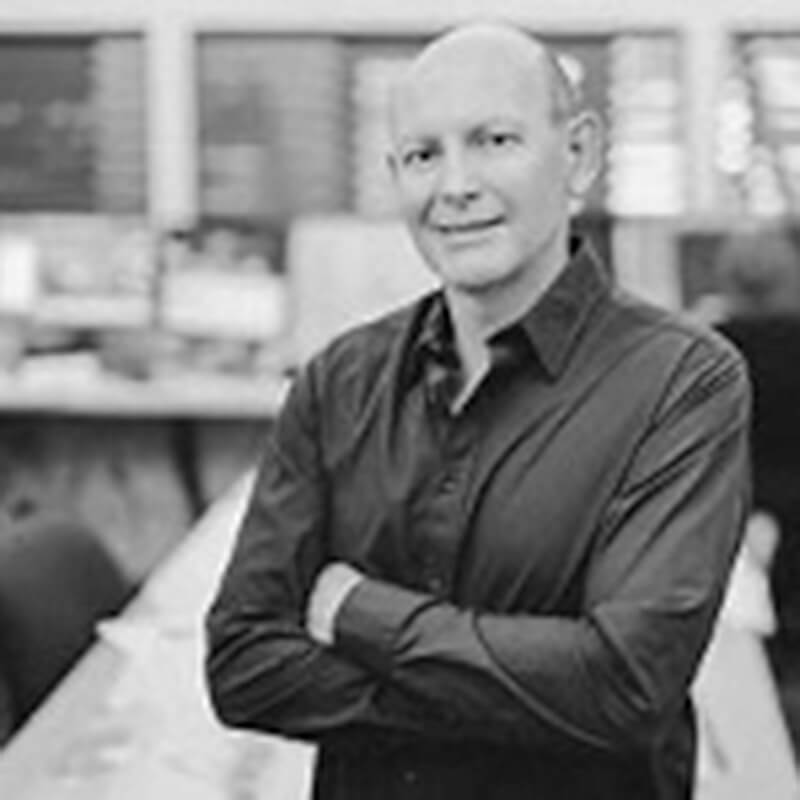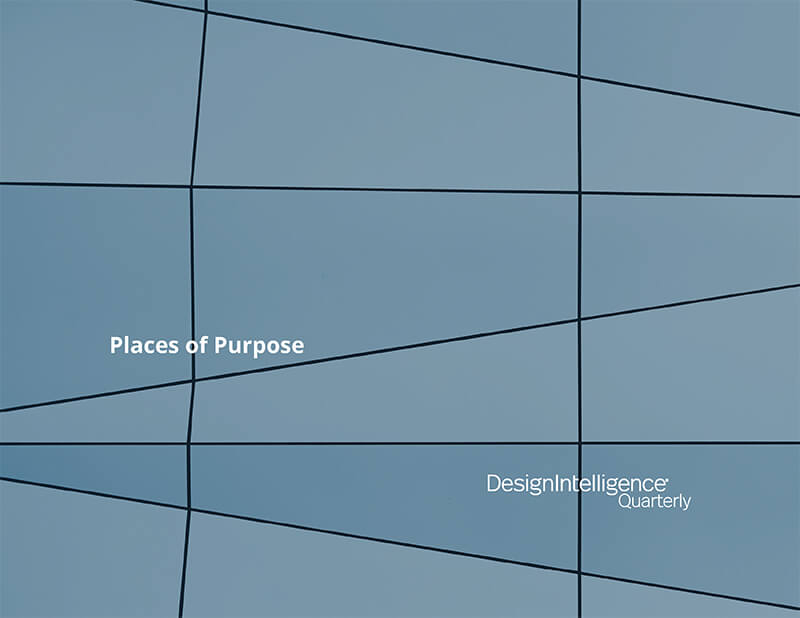Places of Purpose
by Marco Larrea
Principal, EDSA
June 14, 2021
EDSA’s Marco Larrea shares his secrets to international collaboration
DesignIntelligence (DI): Our focus is professional interaction and your perspective working internationally. Please tell us about yourself and what you do.
Marco Larrea (ML): Born and raised in Ecuador, I studied architecture in country and then attended Louisiana State University to pursue a landscape architecture degree with a minor in urban planning. It was during my college years that I developed a passion for not only design and art, but an unsatiable interest in language.
After running my own company for a few years back home I joined EDSA as an entry level designer. With hard work, commitment and an aptitude for quality design, I became the first Hispanic Principal. When I started with EDSA we were about 80 people and our vision was to continue expanding globally. I worked in the United States for a few years and then we opened an office in France, where I worked for three years. From their my focus gravitated back towards Latin America in an effort to shift sensitivities and transform preconceptions of landscape architecture as a more meaningful discipline and impetus for positive design outcomes. I’ve worked all over the world, but mainly in Mexico, Costa Rica, Nicaragua, Colombia, Peru, Ecuador, Brazil, Argentina, Chile, Spain, France, Greece and Japan.
In thinking about our international expansion, I recall an early conversation with our Founder, Ed Stone.
He asked me how I felt about the company and I said, “We do so much international work and we need greater diversity in people if we
want to design places that are sensible and meaningful for the local populations.” Proudly, we have solved this disconnect, with team
members representative of 35 different countries. They help marry the relationships on projects with a higher cultural understanding and
fluency in language.
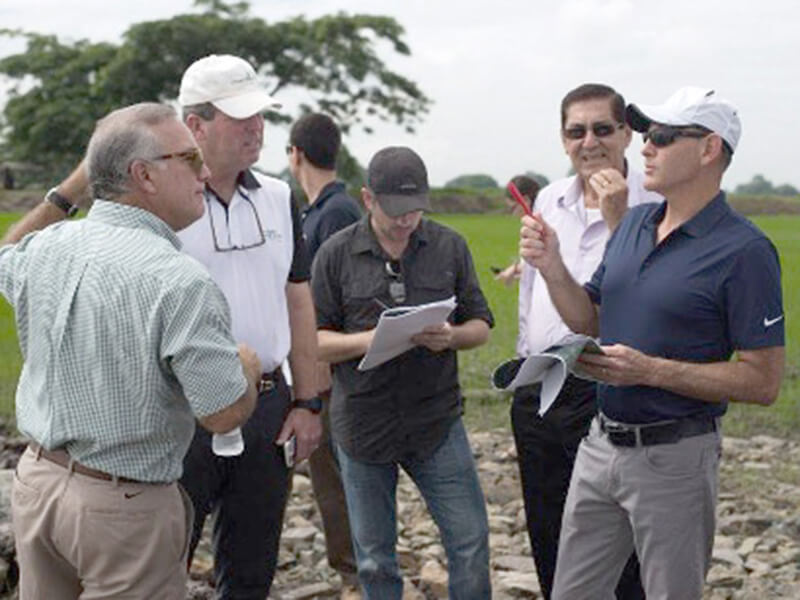
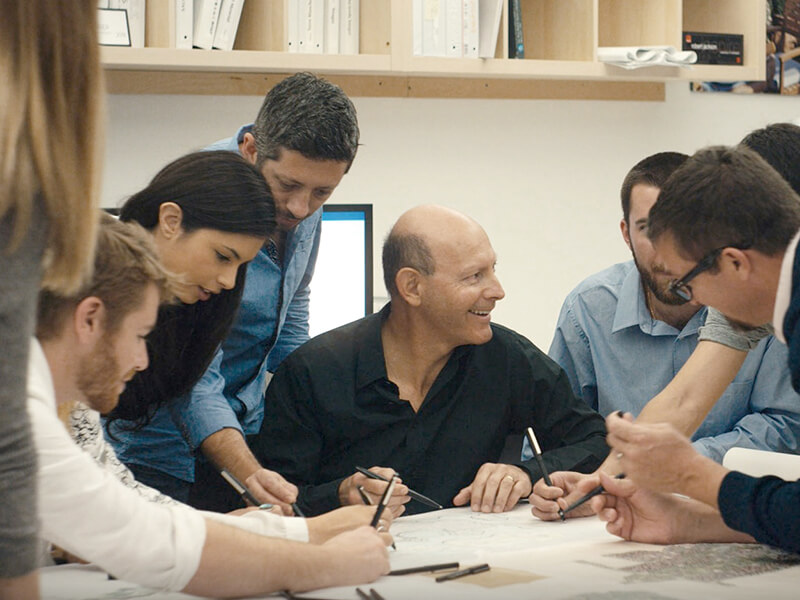
DI: How do you collaborate on international projects?
ML: The key is to learn about the culture, the people and the place. Do your research before you go. When we opened the office in France,
most of the work was in a rural area outside Provence, where the locals were not fans of development and less so of American consultants.
They didn’t want regional development because of its potential damage to a naturally rich and stunning countryside. So, we made it a
point to learn about the local culture and understand it.
I moved to France more than a month in advance and visited local villages. I drank wine on the terraces, enjoyed great food at local
bistros, and sketched while observing, listening, and paying attention to the people, their lifestyles and values – in essence, full
immersion. That is key to designing a project that is very much tied to the culture, the architecture and the landscape.
Understanding the context of a place takes a community. It’s about partnering with the right local consultants and a visionary
client.
It was on this project, some 30 years ago, that EDSA started working with Four Seasons and a collaborative team that, together, bridged the
layers of history, cultural realities and regional context to achieve the greatest result for that site and every person who will visit,
live and enjoy it.
In the end, working internationally or domestically is all about the relationships. How you build those relationships is by being humble, understanding that people take priority, and doing the research.
DI: Do you typically work as a subconsultant to an architect?
ML: In my case, we typically work directly with the owner and are brought to a project early in the development process. The key for us – and I learned this from Ed Stone – is how to serve as the team leader in developing a unified project vision that carries through to the architecture and interiors, the master planning, landscape and ultimate construction of the project.
DI: That’s fascinating. My own bias was exposed there. As an architect, I was typically the prime consultant, then we built the team and brought others under us. I’m glad you’ve been able to lead.
ML: A lot of landscape architecture firms work through an architect or an engineer, but we’ve been fortunate to have experience in both – as a subconsultant and direct with clients.
As land planners and landscape architects, we come at things through a bit of a different lens. We have an opportunity on every project to do something completely unique, something helpful for the owner, the environment, the people and their culture.
When you have that click with the owner, when you make that connection, then you are called on to build the rest of the team. As planners and designers, we have the knowledge to create the overall vision and develop the master plan before other consultants join. When the landscape architect is added late, you’re forced to go in and retrofit a meaningful outdoor experience to the infrastructure and building footprint. Not always ideal.
DI: What a fine model for collaboration. Learn about them and their culture first. Listen, second. Then create the vision together. Since you are typically the lead, how do you draw the best out of your teams?
ML: Our corporate values talk to designing without limits and leveraging our collective brilliance in support of innovation and continuous learning. Within our organization we encourage all designers to contribute their ideas and opinions – everyone brings something to the table. Ideas take form without criticisms or comment. That’s the key to collaboration. Everyone sketches. Everyone shares – and then excitement builds towards consensus on the best alternatives.
I’ve been on teams when I was younger where there was only one architect, the guy in charge, and he would tell us what to do, what to
think, what to say, how to do it and how to drive. He was harmful for the team environment because he didn’t allow people to explore
their creativity.
I’m very strong in what I think and do. I design with passion and confidence. But, I also allow my team to experience the same
confidence.
DI: You’ve talked about your abilities to be inclusive. So many of the problems in our industry come from the ways we contract and set up projects. Can you talk about inclusive aspects that have influenced your ability to change the rules of the game, the delivery method or the way the project is budgeted — to get the team to think about the broader impacts?
ML: Can’t stress it enough – relationships, relationships, relationships. They build trust and mutual respect at a client leadership level and at the project management level.
During the visioning process for a project in Mexico, we met with the client and project director and aligned their expectations with what was necessary for environmental sensitivity, marketing, natural resources, human relationships, and creating unique communities. After we distilled that connectivity into our project vision, they brought in the front-line project managers that focused on pre-established schedules and costs. Once everyone has the same vision and buys into the project outcomes, consensus and clarity in how things will move forward is possible – because everyone is on the same page and understands the end game.

But that doesn’t mean things don’t change. Into design development, we had to reduce costs. We suggested adding additional units to generate additional income without compromising design quality. Today, the project is one of the most unique resort communities in the world. Having those kinds of projects under your belt puts you in a different position when you talk to a client who is just starting to develop a property. You gain respect quickly. In this case, we brought alternative ideas that moved the project forward in better ways. We added rooms and were able to balance costs by also bringing in revenue.
DI: You had those strong relationship, the vision, the respect and the experience. Share your vision of a great project kickoff meeting with us. Dream. You’re starting a significant new international project. Where are you? Who’s in the room? They turn to you as project leader. How do you begin? What do you say? What’s your agenda and what’s the outcome at the end of the day?
ML: I’m going to Malaysia to an island off the coast. We walk the site absorb it all. The island has power feeding from the beautiful ocean — turquoise water, sand palms in the front — and then the power moves uphill, to beautiful vegetation, large trees, mountains, a ravine with waterfalls. It’s at that moment, we begin to understand the concept and the potential for the project. We visualize units on stilts, tree houses, lots of paths and walkways into the jungle, water tours to different locations. We envision buildings designed like leaves or roofs that lay like a leaf. Maybe there’s a knot that comes from a local tree that can be shaped into a building or the seeds can be the shape. The leaves can give you shelter from the winds, the environment, and the rain, and that’s the roof, with all the vegetation going through it. Maybe the arrival is not typical. Where you arrive is more like a structure crossing over the ravine. You sit on it and you look off to the ocean. You are able to make people feel they’re in a special place by using sight, smell, sound, touch and taste to create a sense of place.
DI: Man, you are good at this. So vivid. What happens next? You’ve had a great kickoff meeting and shared the vision. You’ve got this great opportunity, your team’s assembled on-site. How does the day conclude and what does the team do?
ML: The first thing we do is explore the site. We walk it. We drive. We go by water. We visit the high points, the low points and the ravines. We look at view angles and corridors. We begin to understand where we may place some elements and how we arrive. I always make quick notes about my experiences — the most memorable and most important.
Then we get to brainstorming. Here’s when you really capture what people want to do. The idea is to create one of the most boutique hotels in the world. So, maybe we bring in Kengo Kuma, a famous Japanese architect? We determine the overall vision of the project. It needs to be very sustainable and unique within the nature of the terrain without touching any of the vegetation – maybe Six Senses should be approached as an operator?
We should add a local environmental consultant to the team. Additional research is needed to advance the culture of Malaysia. And then we start visualizing. We talk about the program, and we let the clients go away. We sit at the table and start sketching, drawing some of the master plan elements. How you arrive, where the roadway goes, where can we nestle units, the building and supplier area and some of the common grounds. We decide what we want to create that’s unique from other places so we can differentiate it from the competition. At the end of the day, we have dinner and talk some more. The next morning, we present the first ideas to the owner.
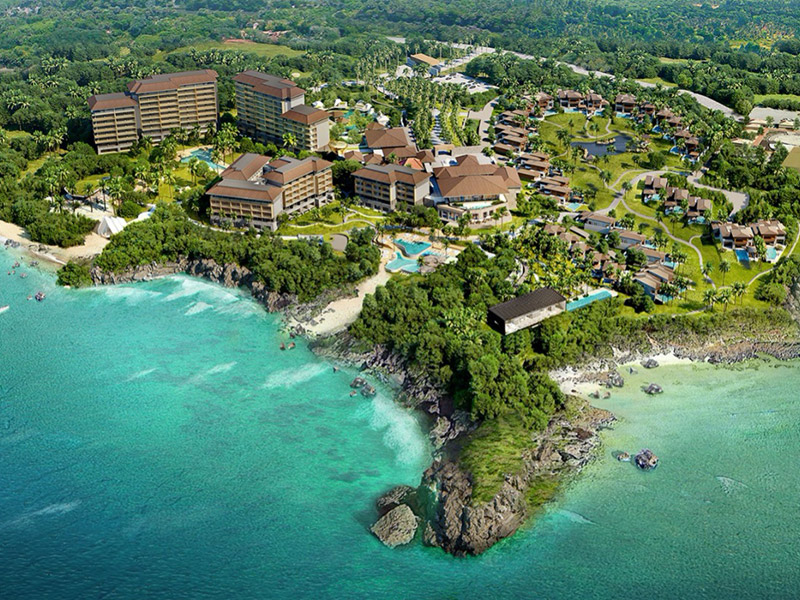
Photos provided by EDSA
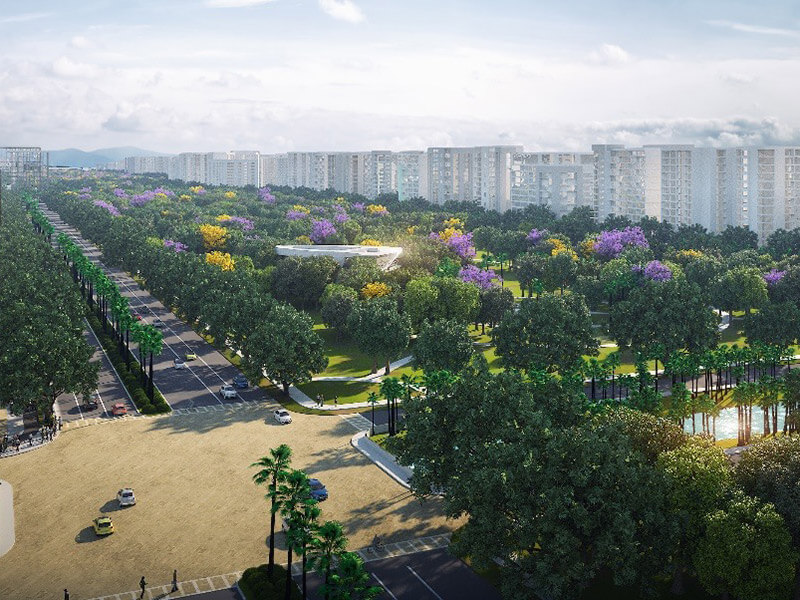
DI: A wonderful vision. I can see why you do what you do. What are your passions and strengths?
ML: I have a passion for design. To create experiences for people and projects that are completely different, unique and environmentally sensitive.
DI: In today’s world, we’ve got all these concurrent crises happening. Everything seems connected now — diversity, social, economic and environmental issues. One way to cope is to be more inclusive of people. Another way is to use more machinery, perhaps new processes. How are you solving this problem of connectedness in your work?
ML: You’re absolutely right. Things are more connected. The pandemic has changed all of us. We’ve had to adapt quickly and
it’s not going back to how it was.
We have quickened our adoption of technology to better connect and communicate with each other.
We also need to be better at being inclusive which includes having tough conversations at all levels with people across the globe. We have to be aware and bring more diversity to the table – empowering others to lead the discussion, to listen to what’s important before speaking – that’s true collaboration. Inclusion is so important because we do international work and we’re always working with other cultures. We have to understand them – and that starts at home in our own office. We have a great team and are doing really good work. We are talking more than we ever did before.
DI: How do you produce work?
ML: We’ve proven we can do everything in digital form but it’s still challenging to create a vision for a master plan on the computer. A 3,000-hectare site is hard to put on a computer because you’re limited to looking at a small section on the screen to see the detail, when the full master plan is as large as a table.
There’s no replacement for sound design thinking. We spend a lot of time drawing and sketching and coming up with ideas. Young designers often tend to go directly into presentation mode once they have one idea that they feel strongly about. They’re not investigating options on paper, exploring four or five ideas, and asking why this or why that to evaluate them. Technology is helping us do presentations and beautiful 3D models, but we need to be thoughtful as to when and how we apply it. Selecting the right design tools at the right time is important. But so is selecting the right people and ideas.
Marco Larrea, PLA, is a Principal with EDSA. Armed with a natural respect for social and environmental influences, Marco has an ability to discern the essence of a place and effectively distill original concepts and ecological narratives to create harmonious spaces. In considering site history and realities, town interface, implementation strategies, and each property’s unique cultural, physical, and environmental characteristics in his designs, Marco advances industry-leading ideas with a contextual approach that has emerged from a passion that intuitively impacts human behavior, economic well-being, and environmental sensitivity. He has a Bachelor of Landscape Architecture degree from Louisiana State University and attended the School of Architecture at the Central University of Ecuador.

